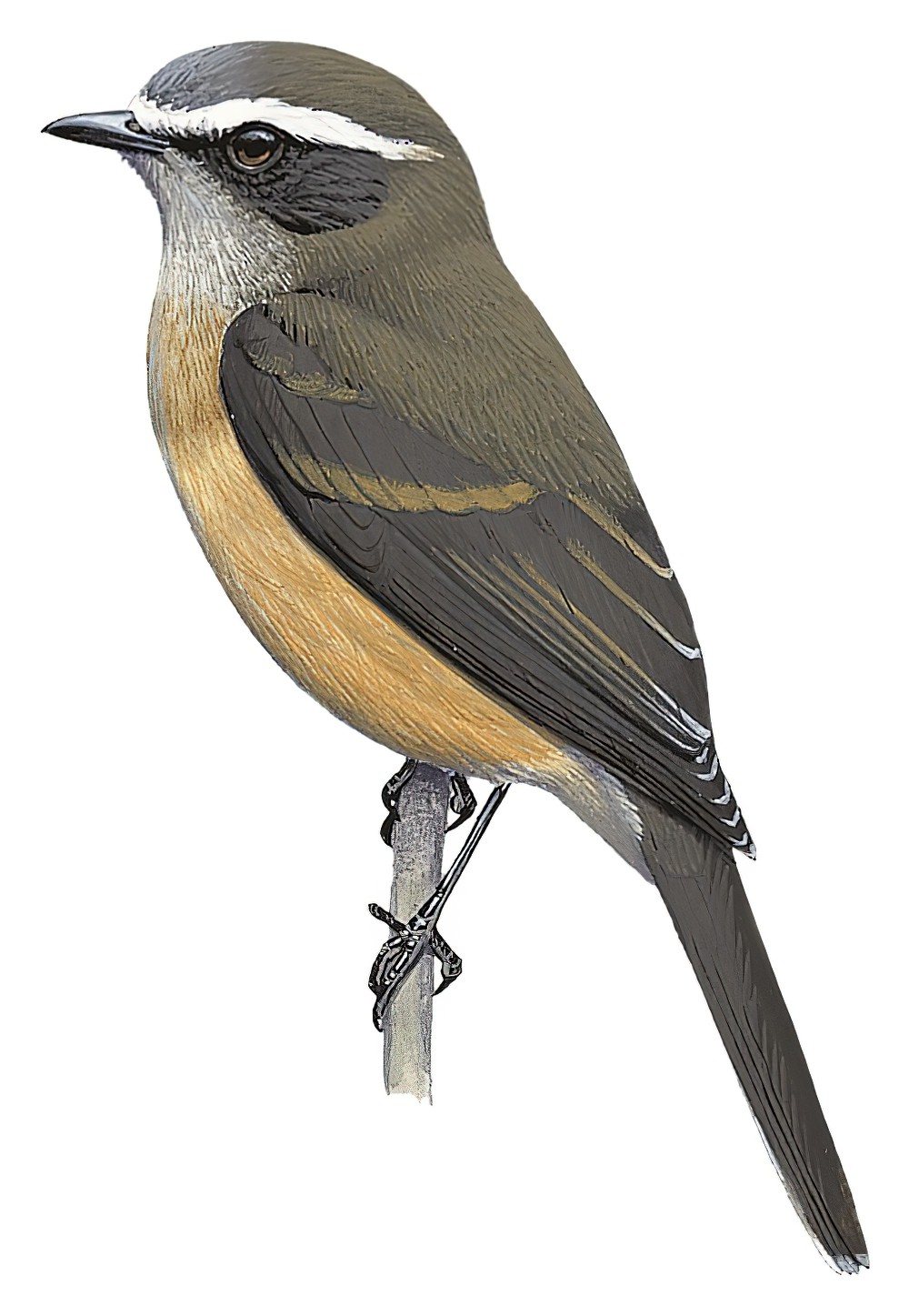d’Orbigny’s Chat-Tyrant / Ochthoeca oenanthoides

d'Orbigny's Chat-Tyrant
SCI Name:
Protonym: F[luvicola] OEnanthoides Mag.Zool. 7 cl.2 p.60
Taxonomy: Passeriformes / Tyrannidae / Ochthoeca
Taxonomy Code: dorcht1
Type Locality: La Paz, Bolivia.
Author: d''Orbigny & Lafresnaye
Publish Year: 1837
IUCN Status: Least Concern
DEFINITIONS
OCHTHOECA
(Tyrannidae; Ϯ D'Orbigny's Chat Tyrant O. oenanthoides) Gr. οχθος okhthos bank, mound; οικος oikos dwelling < οικεω oikeō to inhabit; "Gen. Ochthoeca n. gen. (οχθη, Ufer; οικεω, bewohnen.) Scheint die Gattung Fluvicola im westlichen Amerika zu ersetzen, stimmt mit derselben im Schnabelbau und der Fussbildung überein, unterscheidet sich aber durch verhältnissmässig längere Flügel, durch den nicht stufigen, sondern geraden etwas ausgerandeten Schwanz und abweichende Färbung des Gefieders 1). 1. O. oenanthoïdes. Fluvicola oenanthoïdes Orb. Voy. Amer. Ois. T. 38. F. 2. 2. O. Saya. Muscicapa Saya Bonap. Tyrannula pallida Sws. ... 1) Hierher gehören mehrere von d'Orbigny beschriebene, uns unbekannte Arten des westlichen Südamerika." (Cabanis 1847); "Ochthoeaca Cabanis, 1847, Archiv f. Naturg., 13 (1), p. 255. Type, by subsequent designation (G. R. Gray, 1855, Cat. Genera Subgenera Birds, p. 48), Fluvicola oenanthoides d'Orbigny and Lafresnaye." (Traylor in Peters 1979, VIII, 152).
Var. Ochthocea, Ochthoeaca, Octhoeca, Ochthaeca.
Synon. Tumbezia.
oenanthoides
Specific name Motacilla oenanthe Linnaeus, 1758; Gr. -οιδης -oidēs resembling.
● "G. FLUVICOLA, Swains. ... 8. F. Œnanthoides, Nob. Ad Saxicolæ œnanthe fæminam hæc species coloribus proxime accedit; sed plumis longioribus et laxissimis distinguitur. ... Hab. la Paz, in Bolivia." (d'Orbigny & de La Fresnaye 1837) (Ochthoeca).
● "SAXICOLA ŒNANTHOÏDES. n. s. ... The Wheatear of Europe has not as yet been recorded as having been found in the New World. I should otherwise have been inclined to refer this bird to that species, so similar are the general characters of both, the chief apparent difference being in their size. There are two specimens in the collection, but they are not in sufficiently good condition to enable me to enter minutely into their characters, or make a very accurate comparison between them and our own species. It is upon their relative size, and their locality, chiefly, that I at present suggest their differing as species." (Vigors 1839) (syn. Oenanthe oenanthe).
SUBSPECIES
d'Orbigny's Chat-Tyrant (polionota)
SCI Name: Ochthoeca oenanthoides polionota
polionota / polionotum / polionotus
Gr. πολιος polios grey; -νωτος -nōtos -backed < νωτον nōton back.
d'Orbigny's Chat-Tyrant (oenanthoides)
SCI Name: Ochthoeca oenanthoides oenanthoides
oenanthoides
Specific name Motacilla oenanthe Linnaeus, 1758; Gr. -οιδης -oidēs resembling.
● "G. FLUVICOLA, Swains. ... 8. F. Œnanthoides, Nob. Ad Saxicolæ œnanthe fæminam hæc species coloribus proxime accedit; sed plumis longioribus et laxissimis distinguitur. ... Hab. la Paz, in Bolivia." (d'Orbigny & de La Fresnaye 1837) (Ochthoeca).
● "SAXICOLA ŒNANTHOÏDES. n. s. ... The Wheatear of Europe has not as yet been recorded as having been found in the New World. I should otherwise have been inclined to refer this bird to that species, so similar are the general characters of both, the chief apparent difference being in their size. There are two specimens in the collection, but they are not in sufficiently good condition to enable me to enter minutely into their characters, or make a very accurate comparison between them and our own species. It is upon their relative size, and their locality, chiefly, that I at present suggest their differing as species." (Vigors 1839) (syn. Oenanthe oenanthe).
UPPERCASE: current genus
Uppercase first letter: generic synonym
● and ● See: generic homonyms
lowercase: species and subspecies
●: early names, variants, mispellings
‡: extinct
†: type species
Gr.: ancient Greek
L.: Latin
<: derived from
syn: synonym of
/: separates historical and modern geographic names
ex: based on
TL: type locality
OD: original diagnosis (genus) or original description (species)












